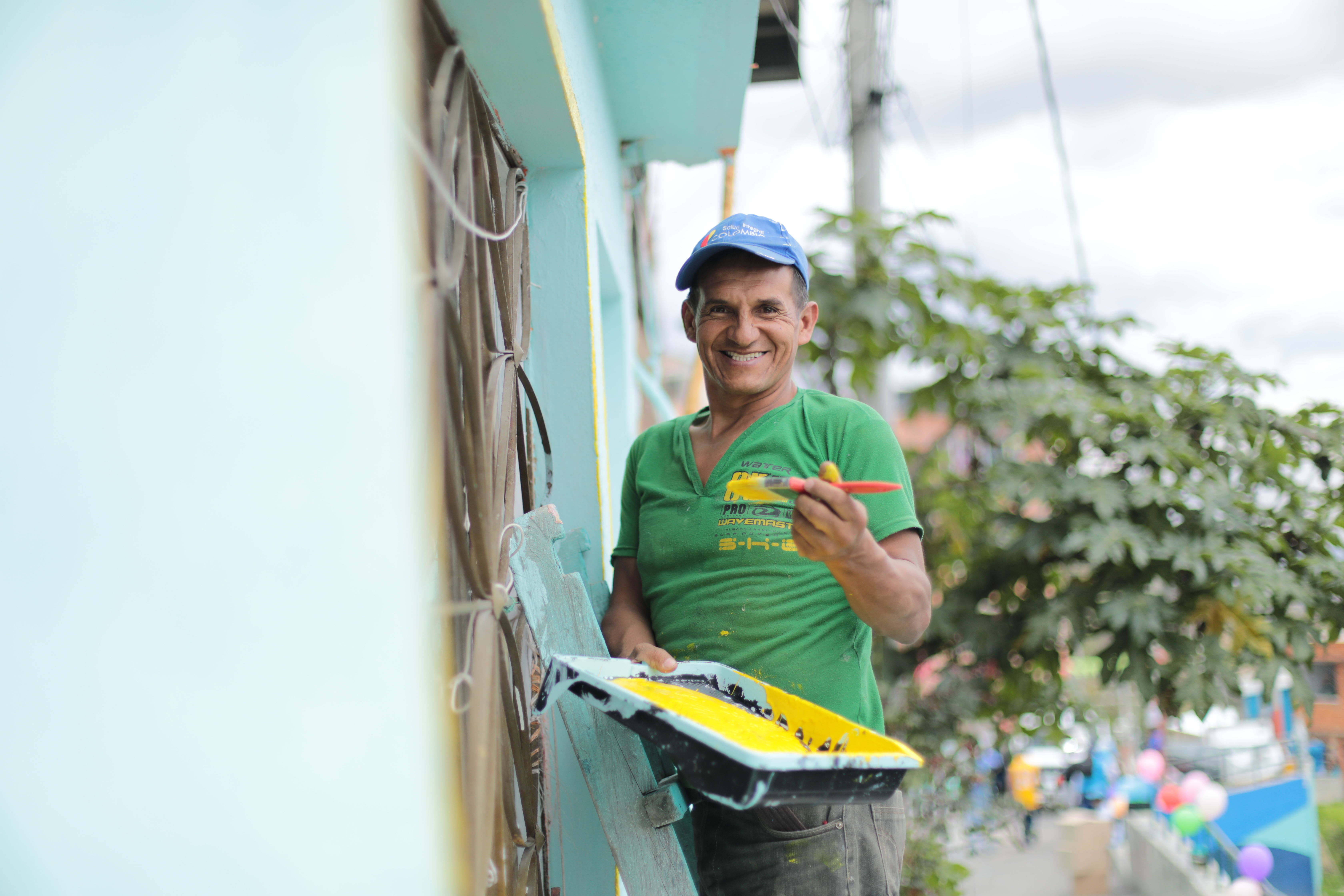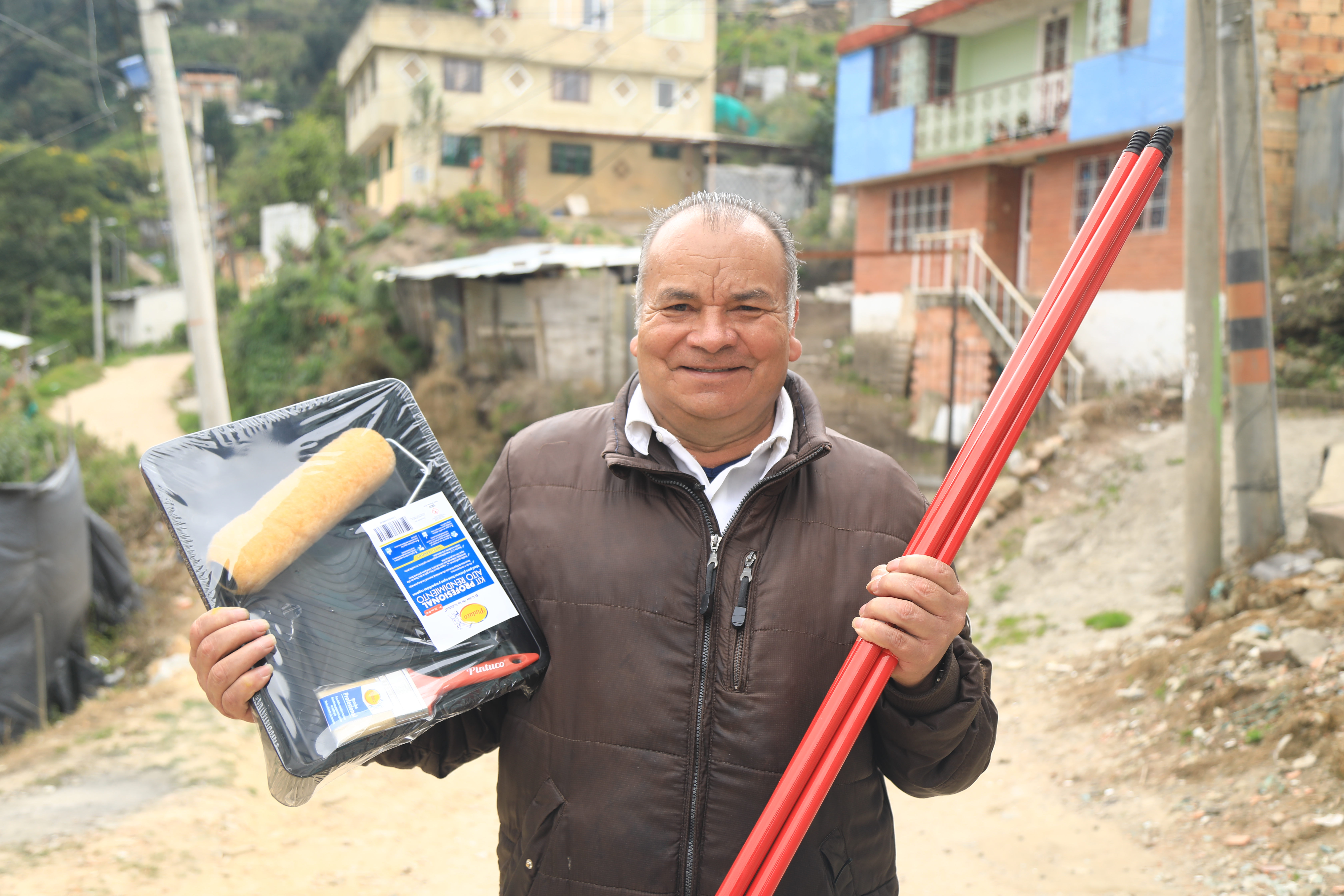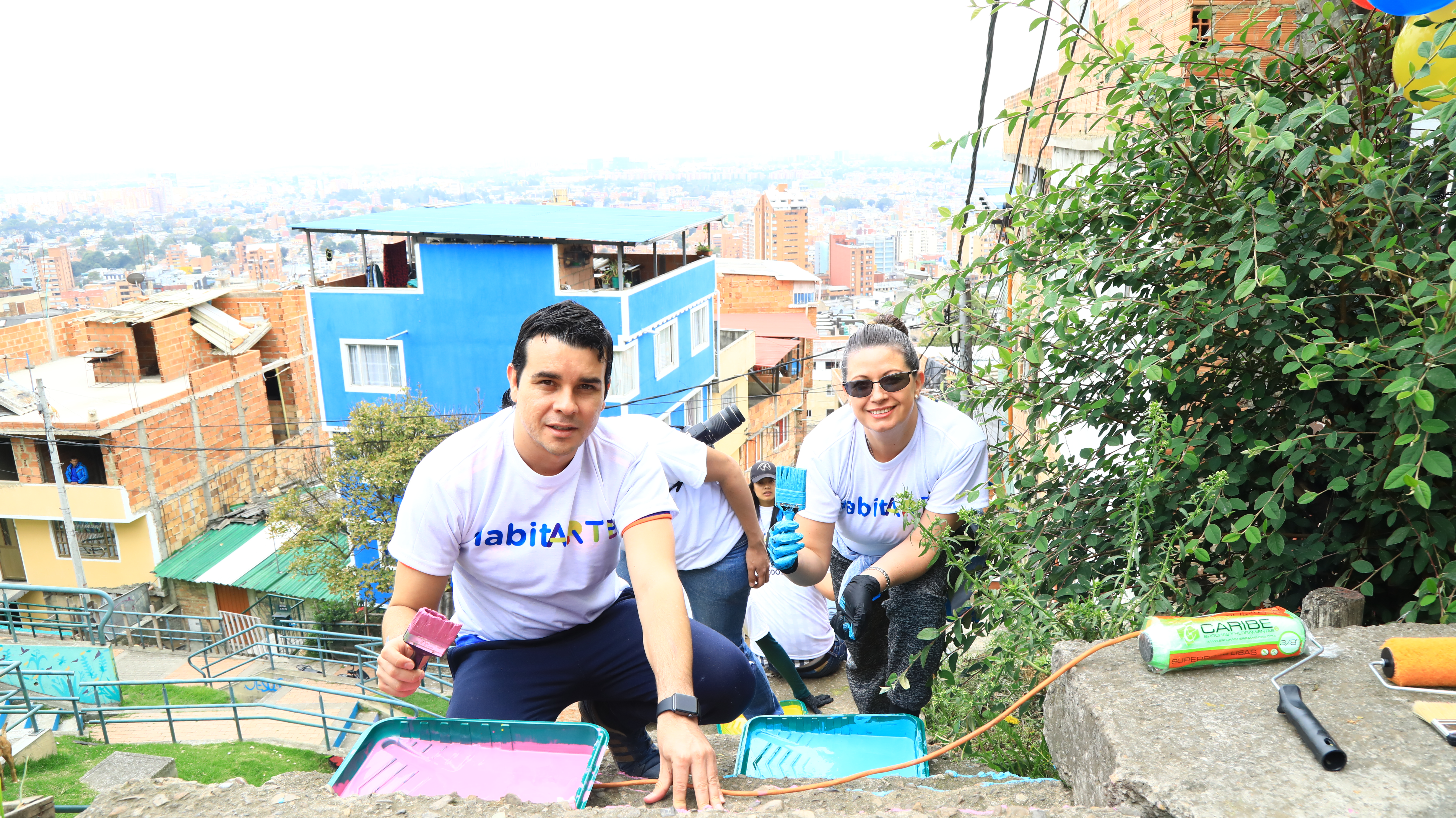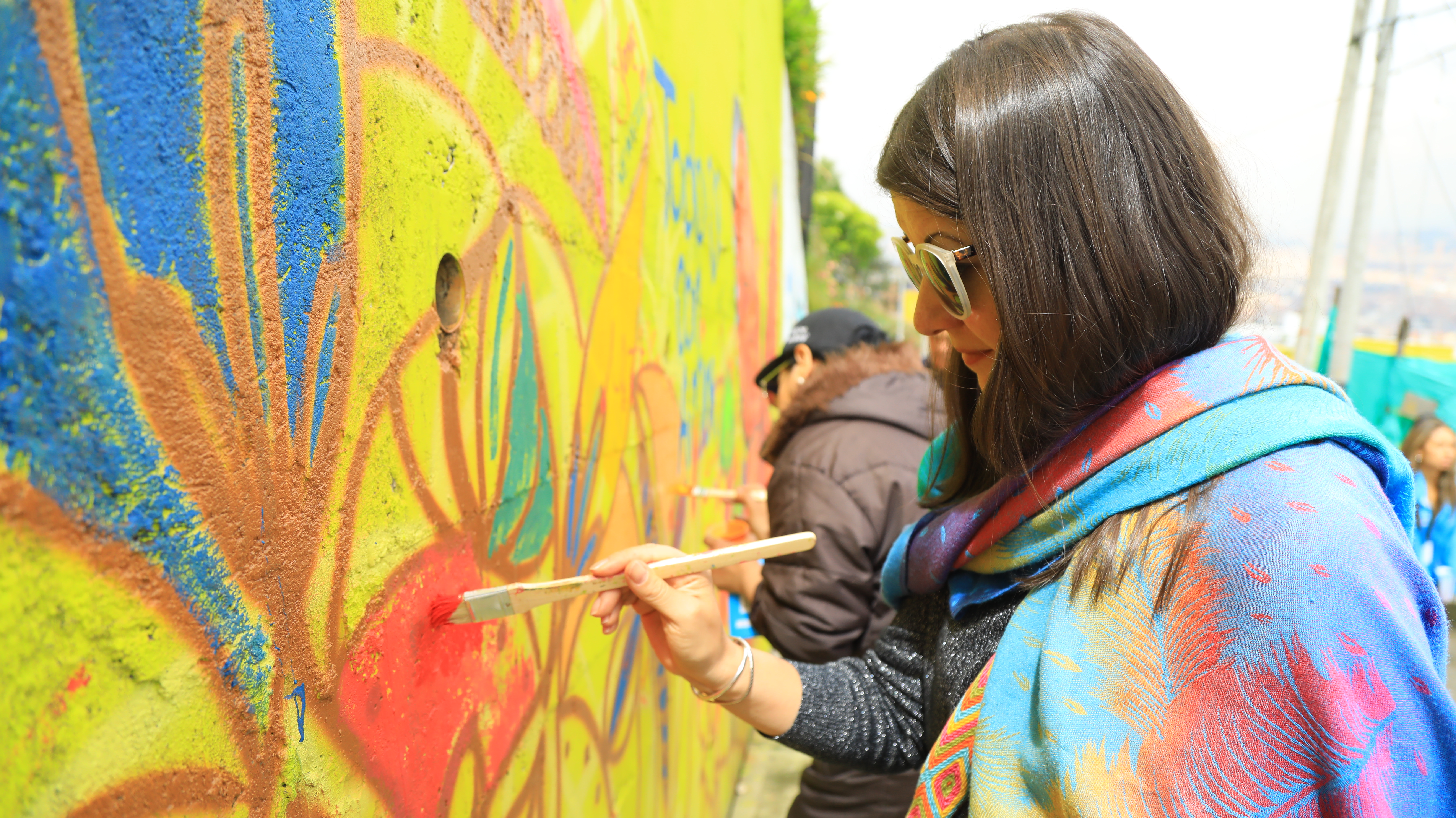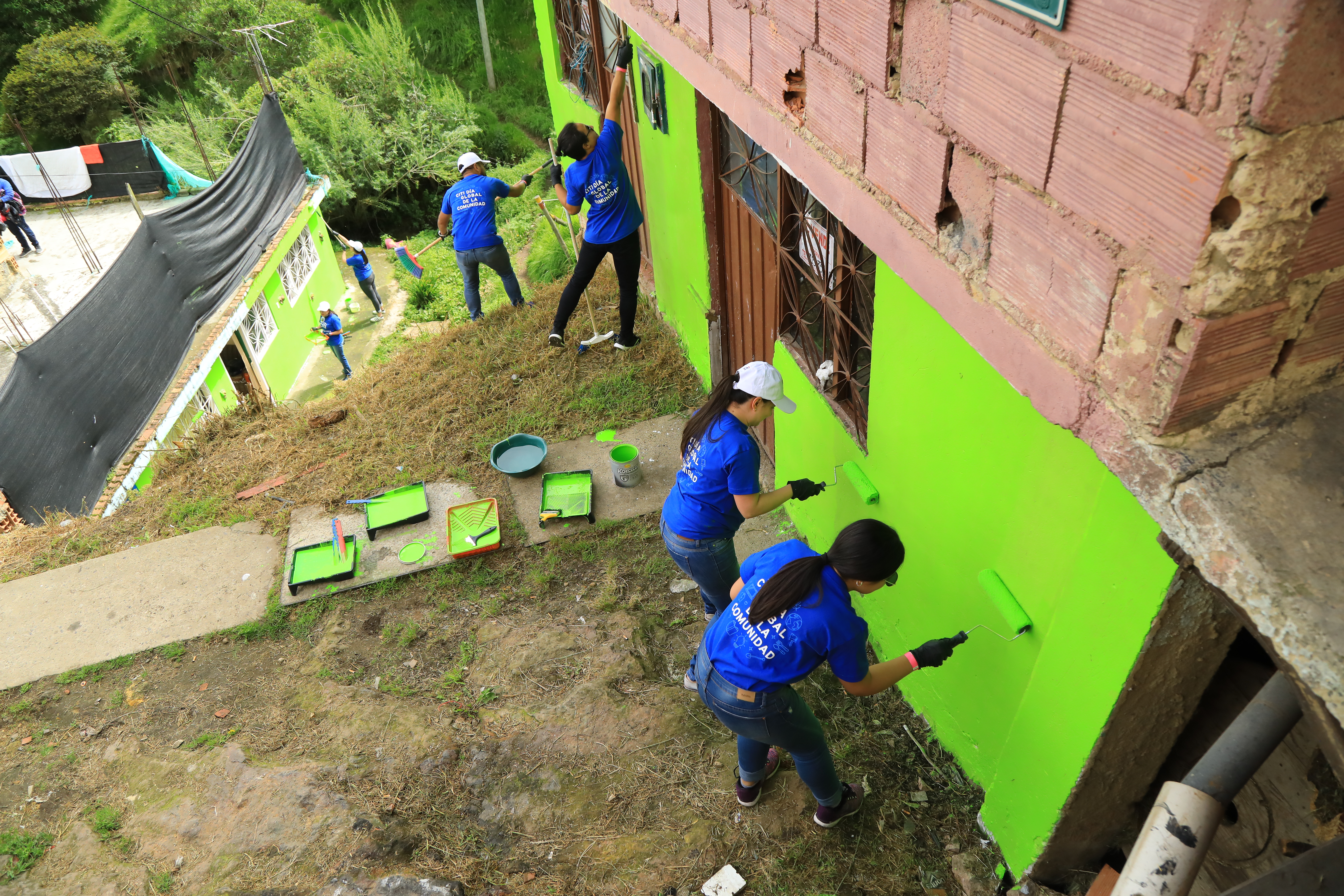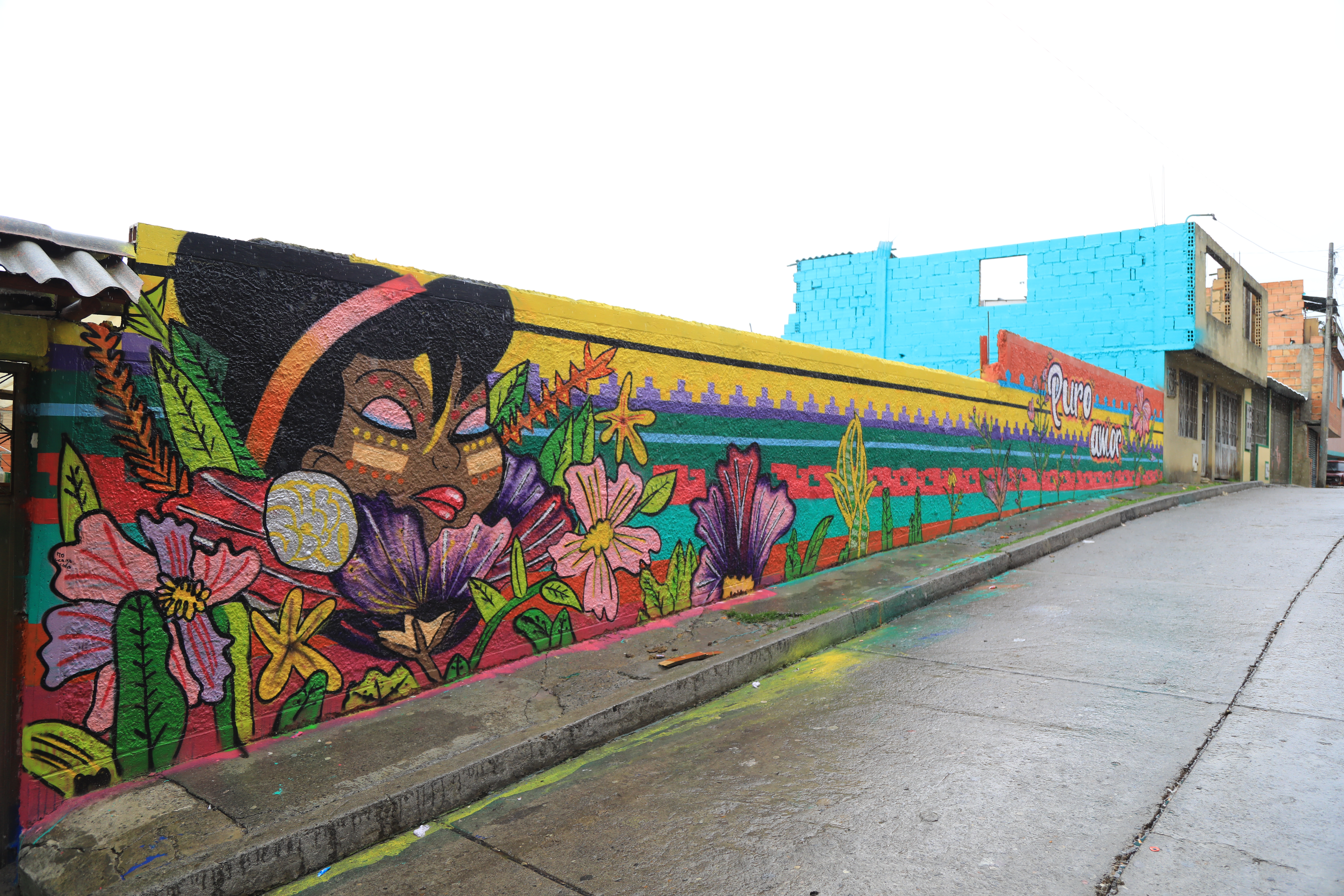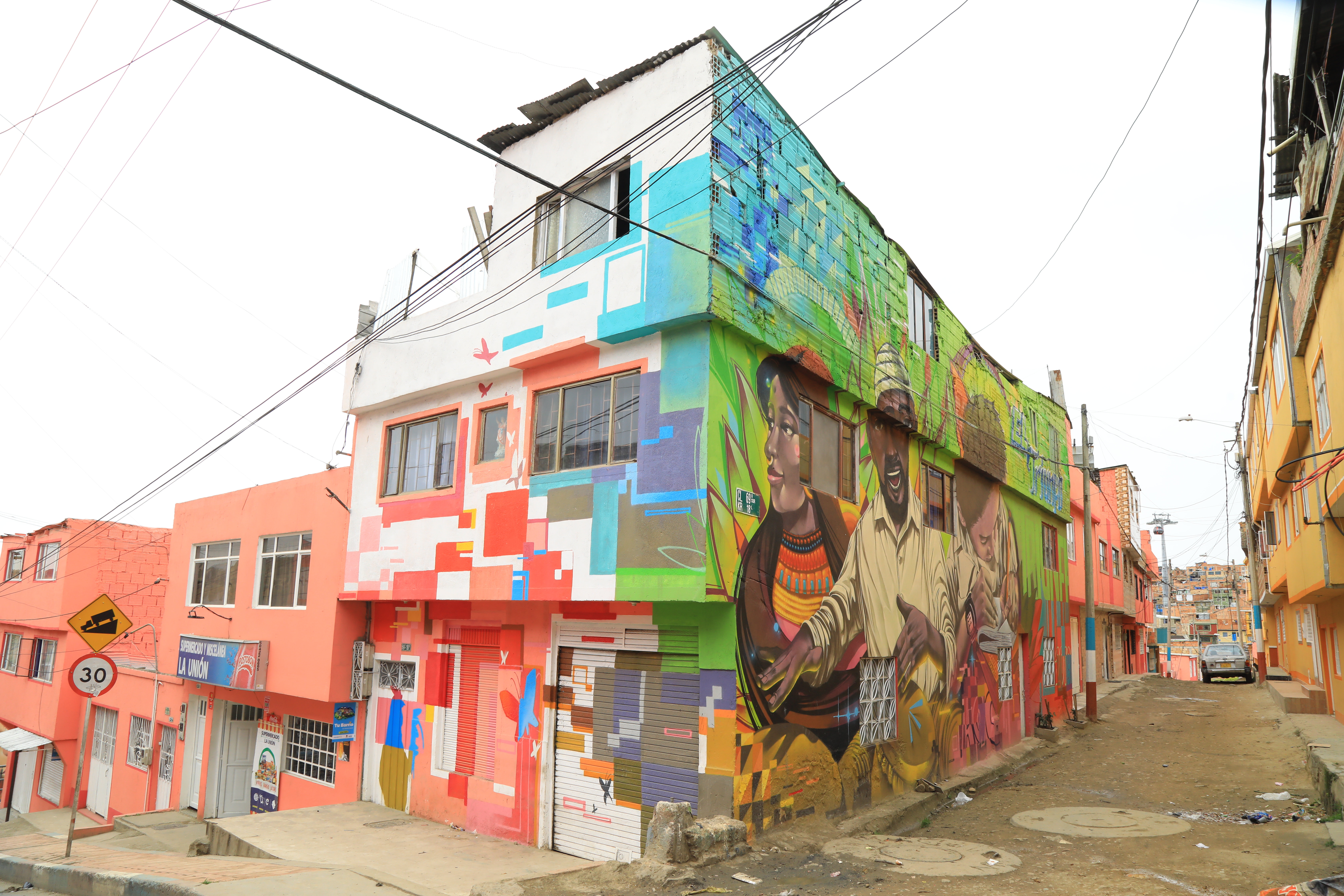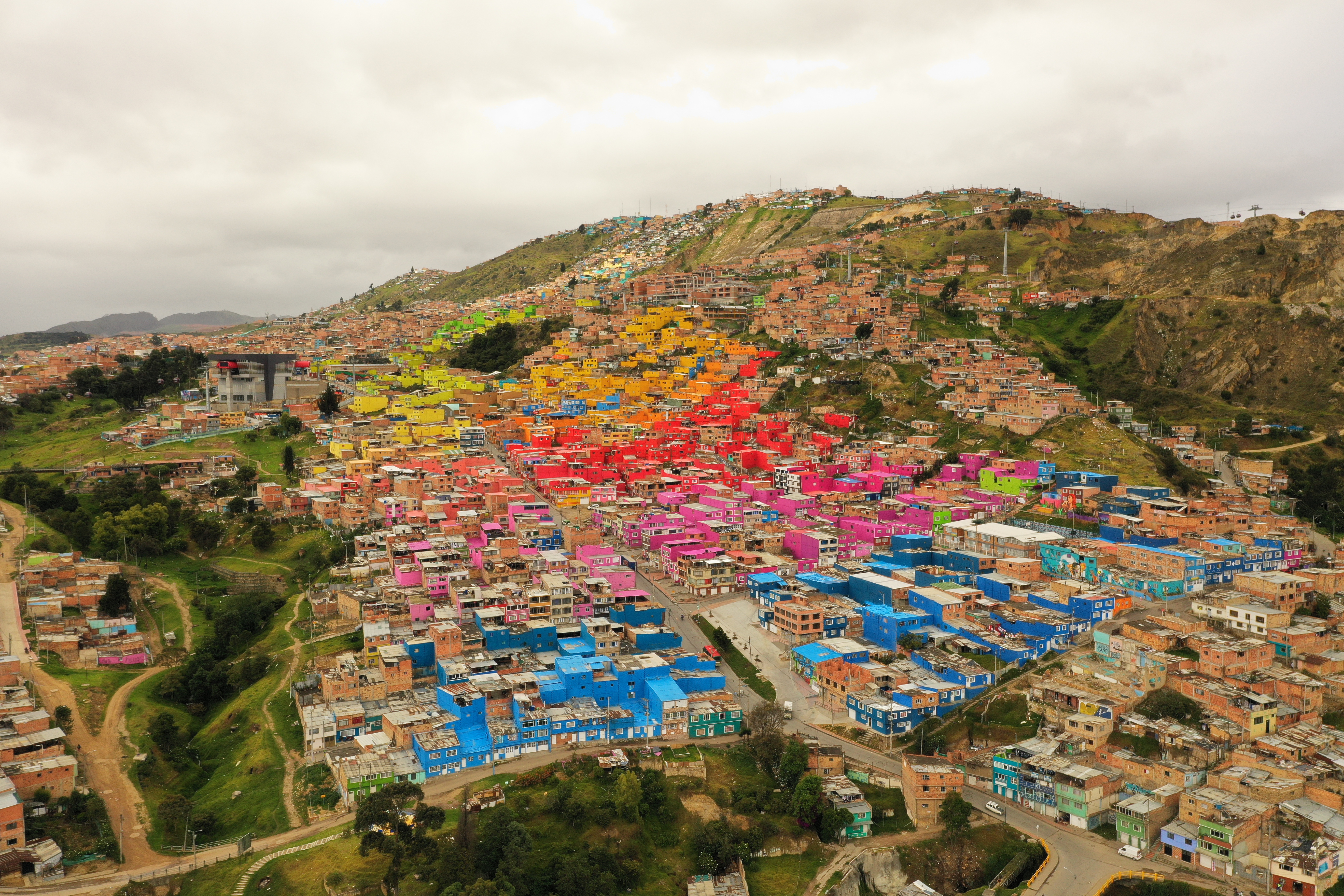- Mariposa - © City of Bogotá
- Mariposa - © City of Bogotá
- Pardo Rubio - © City of Bogotá
- Mariposa - © City of Bogotá
- Mariposa - © City of Bogotá
- Pardo Rubio - © City of Bogotá
- Mariposa - © City of Bogotá
- Mariposa - © City of Bogotá
- Ciudad Bolívar - © City of Bogotá
- Ciudad Bolívar - © City of Bogotá
 Mariposa - © City of Bogotá
Mariposa - © City of Bogotá
City
Bogotá
Main actors
City Government, Community / Citizen Group
Project area
Whole City/Administrative Region
Duration
Ongoing since 2004
An innovative strategy for the urban renewal of informal settlements.
HabitARTE is a social and community initiative where citizens work together to improve the facades and common areas of public spaces in neighborhoods located in informal settlements. Participants are provided with training in different arts and crafts and some have access to employment opportunities.
HabitARTE fosters social inclusion and co-existence within the community and simultaneously builds citizens leadership skills. Participants decide together, which artworks will be displayed, what colors they use for the facades of their building and on the scope of improvements to public spaces in their neighborhood.
The lead agency for the project is the City of Bogotá and the program is administered through the Mayor’s office and the Housing Department.
- To date, 121,708 citizens of Bogotá have benefited from the program.
- The activities of HabitARTE have managed to unite the elderly population with the young, as the transformation of the territory they inhabit becomes a common endeavor.
- The collectives and social groups of the communities where HabitARTE has been carried out have collaborated to coordinate their activities.
- The creation of macro-murals, and the fact that the community is co-responsible for painting their facades, has strengthened ties between people and there is more community cohesion. The HabitARTE strategy has intervened around 95,000 facades with a strong community participation process.
- Within the program, the families have been acknowledged as the key driver for community building and dialogue, with a view to social inclusion.
- HabitARTE has helped neighborhood communities increase the sense of belonging of their territories, and in this way has fostered a stronger social cohesion and networks of collective care and security.
- The recovery and beautification of public spaces with community work has changed the perception of security and ownership of the neighborhood.
- The partnership between community members and different City Departments has increased the confidence and credibility that citizens have for the public administration in Bogotá.
- With the implementation of the HabitARTE, 3,174 people have been trained in arts and crafts.
- HabitARTE's training programs have generated new abilities and entrepreneurship skills for citizens living in marginalized communities.
- Empowerment of the citizens with respect to their neighborhood has been established, thanks in part to the social change promoted by the messages of the interventions.
- Community and collective capacities based on their own needs and realities have been strengthened. This is reflected in the symbols and elements that HabitARTE's artists include in the murals and works of art that are significant to the communities.
- HabitARTE has brought art to the community: by witnessing the socio-cultural process of murals and how macro murals are managed, people now assume art as valuable
- Ownership efforts must be continued and offered to those who do not yet accept institutional participation. Likewise, reinforce self-management in order to achieve constancy of the different processes.
- It is necessary to keep promoting the participation of the community so that citizens feel they, together with the local government, can lead the improvement of their public spaces.
- It is a challenge for the community to take care of and preserve the artistic interventions, so that they are sustainable in the territory.
- It is essential that the City Departments maintain a good communication with the different communities and that they are provided with truthful information in order to eliminate friction between citizens and the district administration.
- Continuous effort must be made to recognize new community leaders to complement, renew and gain support for community activities.
- It is important to maintain community cohesion during the social activities promoted by HabitARTE. This means following up with the community and fulfilling all commitments.
- The citizens sense of belonging to their neighborhood should be encouraged, taking the necessary time to change imaginaries and establish empowerment processes. This requires transparency in actions and continuity of projects between mayoral administrations.
- Building trust is the basis of the whole process. The institutions, apart from the Housing Department, must gradually enter the neighborhoods. It is first necessary to establish contact with the community leaders and key people, get approval and then move forward. This is done door to door. It is an activation that generates trust. Likewise, timely and clear plans must be established and community leaders duly informed so that they can communicate them to the rest of the community.
- The community must remain empowered within its neighborhood, and this makes training and formation processes of community leaders a fundamental aspect of this program.
- There must be flexibility in the schedules of the different activities within HabitARTE, allowing different citizens to participate in the whole project, each with clear and specific roles.
- It is essential to have an initial mapping of key stakeholders (including the grassroots organizations) and the have a follow-up strategy for the different activities promoted by the program, as well as the academic evaluation of the project in later phases.
- HabitARTE has linked the development of the strategy to all citizens of Bogota. Activities such as volunteering promotes a sense of belonging and co-responsibility for the care and development of both the public space of the city, as well as informal neighborhoods.
- The constant and effective conversation between communities and public institutions for the decision making about the activities, works and interventions that are carried out in the territories, has positioned HabitARTE as a good example of true participative government.
- HabitARTE has already intervened more than 95,000 facades of 83 neighborhoods in 10 localities of Bogota, including 141 murals and 4 macromurals.
- These specific interventions also bring about deeper social changes such as community tourism, community integration activities, which generate cohesion within these communities.
- Due to the fact that HabitARTE does not have additional resources to those invested during the time of its execution in each territory, its implementation methodology includes different activities to promote its sustainability in time.
- In this way, the inclusion component promotes experience trajectories, volunteer days and the strengthening of citizen initiatives, as a way to generate networks among key stakeholders interested in these processes and to ensure that the different interventions of the strategy can be maintained over time.
- Insofar as HabitARTE promotes the recognition of the talents and capacities of the members of the community, it not only mitigates stigmatization and favors the sense of belonging, but also the formation and generation of employment.
- Much of its success is due to the rigorous study of similar experiences and their strategic and creative adaptation to the conditions of informal neighborhoods.
- HabitARTE proposes a clear and precise methodology of action, capable of being replicated in other cities, given that it allows to understand the environmental, cultural, architectural and heritage conditions of each neighborhood, and how public institutions work in different cities.
- In this sense, HabitARTE can be replicated by different institutions that have within their mission objectives the improvement of informal settlements. It is important to mention that the TUPI do not require large infrastructure works and the budget for their execution can be managed with private partners in case the municipality or city does not have the necessary budget.
- Other cities can replicate the management and leadership capacity that is generated through HabitARTE, as well as the legitimacy to involve communities and their capacity to work in the transformation of their own territories.
External links / documents
On Map
The Map will be displayed after accepting cookie policy
